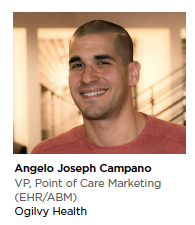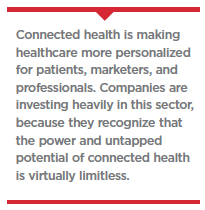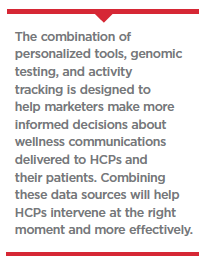 Marvel Studios is about to release its last Avengers movie. It brings together the biggest superheroes from a myriad of universes for the final epic battle, connecting many storylines for one last big hit. Marvel has done quite a bit over the last 10 years to connect these superhero worlds, through movies, merchandise, events, as well as truly connecting us, the viewers, across several sources of technology and media. As a life-long fan of the Avengers, I am even more connected now with their universe through these multiple levels of interaction.
Marvel Studios is about to release its last Avengers movie. It brings together the biggest superheroes from a myriad of universes for the final epic battle, connecting many storylines for one last big hit. Marvel has done quite a bit over the last 10 years to connect these superhero worlds, through movies, merchandise, events, as well as truly connecting us, the viewers, across several sources of technology and media. As a life-long fan of the Avengers, I am even more connected now with their universe through these multiple levels of interaction.
The rise of connected health is a mirror for this “worlds colliding" phenomenon when you consider the many different technologies that are enhancing so much of the healthcare experience. How healthcare experts continue to assess, reevaluate, and pursue next-gen technology — from how it affects patient engagement to how it affects the entire patient experience — is not unlike how Tony Stark looked to build and then continued to improve his Iron Man character’s abilities. In healthcare, connected health tools are rapidly becoming their own larger than life character — one that continues to grow with the ever-evolving healthcare landscape.
What Is Connected Health?
Connected Health is making healthcare more personalized for patients, marketers, and healthcare professionals (HCPs) alike. Companies are investing heavily in this sector, because they recognize that the power and untapped potential of connected health is virtually limitless. This emerging field encompasses countless connected digital channels — wireless, genomic tests, mobile, electronic health records (EHRs), and telehealth.
These mediums point to a theoretical model for health management, where devices, services, and interventions are designed specifically to address the patient’s needs. Health-related data can be shared in such a way that the patient can receive care in the most proactive and efficient manner possible ― just as  Marvel movie tickets can be purchased at the same time one downloads the most recent digital copy of Ant-Man and The Wasp. This simple example of a personalized and seamless Marvel encounter is one that superfans are accustomed to experiencing with the comic conglomerate. Marketers should aim to have their connected health tools embody a similar experience for both HCPs and patients.
Marvel movie tickets can be purchased at the same time one downloads the most recent digital copy of Ant-Man and The Wasp. This simple example of a personalized and seamless Marvel encounter is one that superfans are accustomed to experiencing with the comic conglomerate. Marketers should aim to have their connected health tools embody a similar experience for both HCPs and patients.
As patients continue to interact with the healthcare system through these connected digital channels, we expect to see a variety of tools that incorporate patients’ histories and create customized regimens that examine patients’ risk profiles and suggest activities that match or improve their lifestyles.
The combination of personalized tools, genomic testing, and activity tracking is designed to help marketers make more informed decisions about wellness communications delivered to HCPs and their patients. Combining these data sources could produce a holistic digital view of the patient and will help HCPs intervene at the right moment and more effectively.
In Avengers: Infinity War, our heroes devise a plan to conquer Thanos and win the battle. Marketers face the same strategic plan by using connected health data appropriately for a successful campaign. Connected health data can inform both the HCP and the patient, as well as influence decision-making from pregnancy planning to end-of-life care. The use of genomic testing data will likely help HCPs move from making therapeutic regimen decisions to customizing an individual plan based on the patient’s genetic makeup.
Similarly, this data will also inform preventative care based on risk factors for diseases that require preventative planning, such as Alzheimer’s disease.
Connected health is beneficial to all, because it bridges the gaps between patient, provider, and patient health. The term has gained much exposure in recent months, with many marketing experts, physicians, and information technology professionals touting that these tools can revolutionize the entire healthcare experience with vast efficiency.
Connected health departments have emerged in healthcare organizations (HCOs) across the world. Increasingly, large-scale HCOs are investing in their own connected health tools customized specifically to their needs and those of their patients.
How Do Connected Health Tools Offer a Measurable Benefit to Patient Care and Experiences?
Remember the Avengers and Marvel discussion above? Let’s get back to how marketers could model their connected health efforts after some of Marvel Studios’ recent marketing tactics. Disney, the owner of Marvel Studios, recently acquired 21st Century Fox and what remains of the Marvel Universe — X-Men, Fantastic Four, and Doctor Doom — to bring together all areas of their comic book family. This move will allow the viewers to truly connect with each character and affords them the opportunity to follow their development across the greater world of Marvel.
In a similar fashion, Apple purchased a few small health start-up companies some years ago. At the time of the buyouts, the acquired companies had developed a first-of-its-kind central database and Application Program Interface (API) that could connect disparate EHR platforms within a health system and organize them under one specific user interface. Today, many companies create these types of centralized databases for health systems ― organizations like Redox and MuleSoft.
When Apple acquired these start-ups, they had them work within the same list of selected health systems. All the software in the health system was connected via one single-source central database and API. Physicians were free to still use all the typical EHR functionality in the current provided health system they were accustomed to using and the interface didn’t change. From there, the EHR information for the patient was captured in the central database, aggregated, and then passed to the Apple environment, which provided the user interface and information.
For physicians, the EHR didn’t change at all, the central database served as the core functionality that then populated the Apple EHR. Currently, this operation is limited to the health systems that are within the initial beta run. The universal rollout of these features may not be available to all health systems until 2021.
While some health systems were already working with Apple when the beta version was released, others joined after hearing about the new venture. Unlike the months-old beta version, in which users were required to sign up, patients at the participating health systems can now access their medical records by simply downloading them. Also, third-party developers could use the EHR data to create virtual assistants, similar to Apple’s Siri, which could advise patients to make smarter health decisions. These virtual health advisors would be powered by artificial intelligence and each user’s personal EHR data.
Though it took Marvel 10 years and 22 movies to bring together the Marvel cinematic universe, consensus is it won’t take another 10 years for the Apple experience to fully take shape in the connected health universe.
Although connected health touches on many patient care points — much like in the EHR, providers are placing the greatest emphasis on a few central patient experience areas, such as access to care, education, and empowerment. Now more than ever before connected health allows patients and consumers to connect with their provider in a fast, efficient, and convenient manner.
One of the optimal tools used in digital patient care is telehealth. Patients and providers can use telehealth in a variety of ways, with the most common being patient use of direct-to-consumer (DTC) telehealth. A patient speaks to their provider via a web conference or phone call, and from there, the provider conducts an in-depth analysis and usually provides a diagnosis and a specific, personalized treatment plan.
The lesser-used interaction is when physicians connect with each other to share consults, expertise, and knowledge during their patients’ care. For example, a provider in a remote location (e.g., a free walk-in clinic) might call a physician in a larger HCO. The HCO physician may have knowledge, tools, or specific expertise that is not available to the physician at the walk-in clinic, making the telehealth outreach extremely beneficial for patient care.
Telehealth is growing in popularity; it is just one form of connected health that can support better patient access and care. Secure messaging tools — many of which are hosted on patient portals and allow the doctor to communicate with the patient — give patients the ability to communicate with their providers when they have a medical question. Telehealth is not taking the place of in-person care, but it can help address patient concerns quickly. In some cases, secure messages can let a patient know that they do not need to physically visit the doctor’s office, saving both the patient and the medical industry from a time-consuming visit and unnecessary costs.
Benefits of connected health go beyond logistical needs ― it can also improve the way patients interact with and perceive their own healthcare. When patients manage their own health using connected health tools, studies have shown that levels of patient empowerment and self-efficacy increase. Improved patient outcomes are often the result of using wearables, remote patient monitoring devices, or diet and fitness apps — although self-efficacy improvements are not limited to those tools. The aforementioned technologies put patients in charge of their own care, like when a fitness wearable helps a patient set his or her own fitness goals and track progress toward those goals. A remote patient monitoring system will alert a patient with diabetes when his or her sugars are too high, allowing the patient to make adjustments.
Connected health tools also make patients accountable for their own health choices and actions by providing an immediate view of where they are falling short on their wellness path. Connected health is a means to help patients adjust their efforts and get back on track.
As HCPs continue to see the benefits of connected health, they are adopting these tools into their practices. More providers are considering how patient-facing tools can enhance patient care experiences as well.
Increases in patient empowerment occur because these tools directly connect patients with their providers’ efforts to improve wellness. We’re entering a new phase of patient centricity, where patients are becoming more responsible for their own health care, and that creates more opportunities for increased levels of engagement.
With the rising tide of consumerism in health care, providers are likely to continue their foray into connected health. These tools will allow patients to more easily and conveniently access their care while playing a key role as an intermediary of wellness.
What’s Next for Connected Health?
Much like fans will be watching the explosive showdown as the Avengers save their friends and finally beat Thanos in Avengers: Endgame, healthcare  stakeholders will be able to watch their own awe-inspiring story as big tech companies move into the healthcare industry with new players, ranging from Amazon to Apple to Uber and beyond.
stakeholders will be able to watch their own awe-inspiring story as big tech companies move into the healthcare industry with new players, ranging from Amazon to Apple to Uber and beyond.
We’re seeing these companies and others lead the way in people-first technology, using technology to solve human problems. From addressing HCP and patient experiences with platforms, such as DrFirst.com and Carespeak.com, to applying behavioral economic principles like gamification, it’s human behavior — or rather, person-centric behavior — that will support the adaptation of technology across generations, from GenZ and millennials to the tech savvy baby boomers.
When Marvel first opened its doors in 1939, the company tapped into an unmet consumer need for connection, engagement, and empowerment. Over the years, it grew to become the multi-franchise powerhouse it is today. Connected health is set to follow the same meteoric path, with technologies working together as one to allow all healthcare stakeholders to be better equipped with the tools they need to protect, prevent, and empower while navigating the challenges of the complex healthcare ecosystem.(PV)
Ogilvy Health makes brands matter by keeping our audiences’ health, healthcare and wellness needs at the center of every touchpoint.
For more information, visit ogilvychww.com.
















